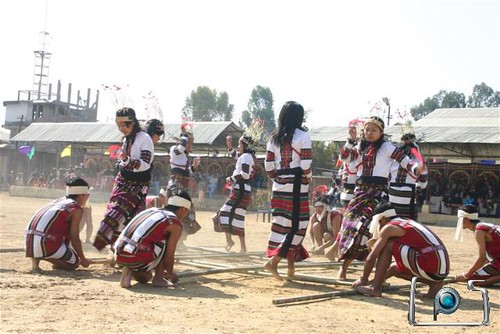Monday, August 24, 2009
Sunday, August 16, 2009
Friday, August 7, 2009
Pictures show daylight 'killing' of suspect by Indian police





I
t became prevalent during a campaign against organised crime in Mumbai in the 1990s, when some police “encounter specialists” became national celebrities. A 49-year-old police inspector in Mumbai is considered to be the top encounter specialist, with 112 “kills” to his name.
Rights groups claim that the practice has become routine and is often used to avoid gathering evidence, or to carry out contract killings.
“Considering the long history and scale of this practice, it is likely that state officials and senior police are not only aware of these killings, but allow, unofficially sanction or even order these killings,” Human Rights Watch wrote in a report on police abuse that was published on Tuesday.
The government in Manipur originally stood by the police, who claimed that Mr Sanjit fired at least four shots, killing the pregnant woman. After several days of violent protests and the publication of the photographs, the local government has suspended the six police officers involved and ordered a judicial inquiry.
Okram Ibobi Singh, the chief minister of Manipur, said that he had been misled by his police chief.
“I admit I said Sanjit was an active member of the separatist People’s Liberation Army (PLA), because that is what the police chief told me,” he told a news conference. “Now I know he had surrendered and apparently was not involved in the activities of his former organisation.”
Mr Sanjit is reported to have left the PLA on health grounds in 2006 and was working as an attendant in a private hospital.
“Further action will depend on the outcome of the judicial inquiry,” Mr Singh said.
Activists warned that a judicial inquiry could take years and that members of the security forces accused in several previous cases had yet to be held to account.
Securing convictions is hard in Manipur because it is covered by the Armed Forces Special Powers Act, which allows security forces to arrest, torture and kill with impunity.
Mr Chakma said that he had documented 19 encounter killings in Manipur last year and more than 50 in the past five years — the highest number for any state in India.
Among them was Thangjam Manorama Devi, a 32-year-old woman from Manipur who was arrested by paramilitary forces and shot dead in their custody in 2004. A judicial inquiry has yet to make public its findings on the case. Indian police have been photographed apparently killing a hospital attendant in a busy market in northeastern India in the first such exposé of a practice that rights groups say is rife within the understaffed and poorly trained force.
The police said originally that they shot dead Chongkham Sanjit, 27, when he fired on them as they chased him through the market in the northeastern state of Manipur, on the border with Burma, on July 23.
The Manipur police commandos said that they found a 9mm Mauser pistol on the dead man, whom they accused of being a member of a banned separatist group — one of dozens operating in the north east of India. Photographs published by the investigative magazine, Tehelka, however show police commandos approaching an unarmed Mr Sanjit, frisking him and taking him into a pharmacy while one officer reaches for his pistol.
The officers are then shown dragging out his corpse and loading it on to the back of a truck. The body of a pregnant woman, who was shot dead in the crossfire of an earlier police shootout, can be seen in the vehicle.
The apparent summary execution took place in Imphal, the state capital, at about 10.30am only 500 metres from the building where the legislative assembly was meeting.
Tehelka said that the images were taken by a local photographer who did not publish them in Manipur for fear of recrimination from the police.
Human rights campaigners said that it was the first time they could remember there being such incriminating visual evidence of what is known in India as a fake encounter killing. “Is this the first time there has been such compelling evidence? I’d say yes,” Meenakshi Ganguly, a senior South Asia researcher for Human Rights Watch, told The Times.
Suhas Chakma, the director of the Asian Centre for Human Rights in Delhi, said: “This is the first case where the actual [incident] has been caught on camera.”
Police in India often kill alleged suspects in staged shootouts but it is almost impossible to prove because they always claim that the victims were armed.
The practice began in the 1980s as a way to eliminate dangerous suspects who could not be convicted in court because of corruption and witness intimidation.
Labels:
news









